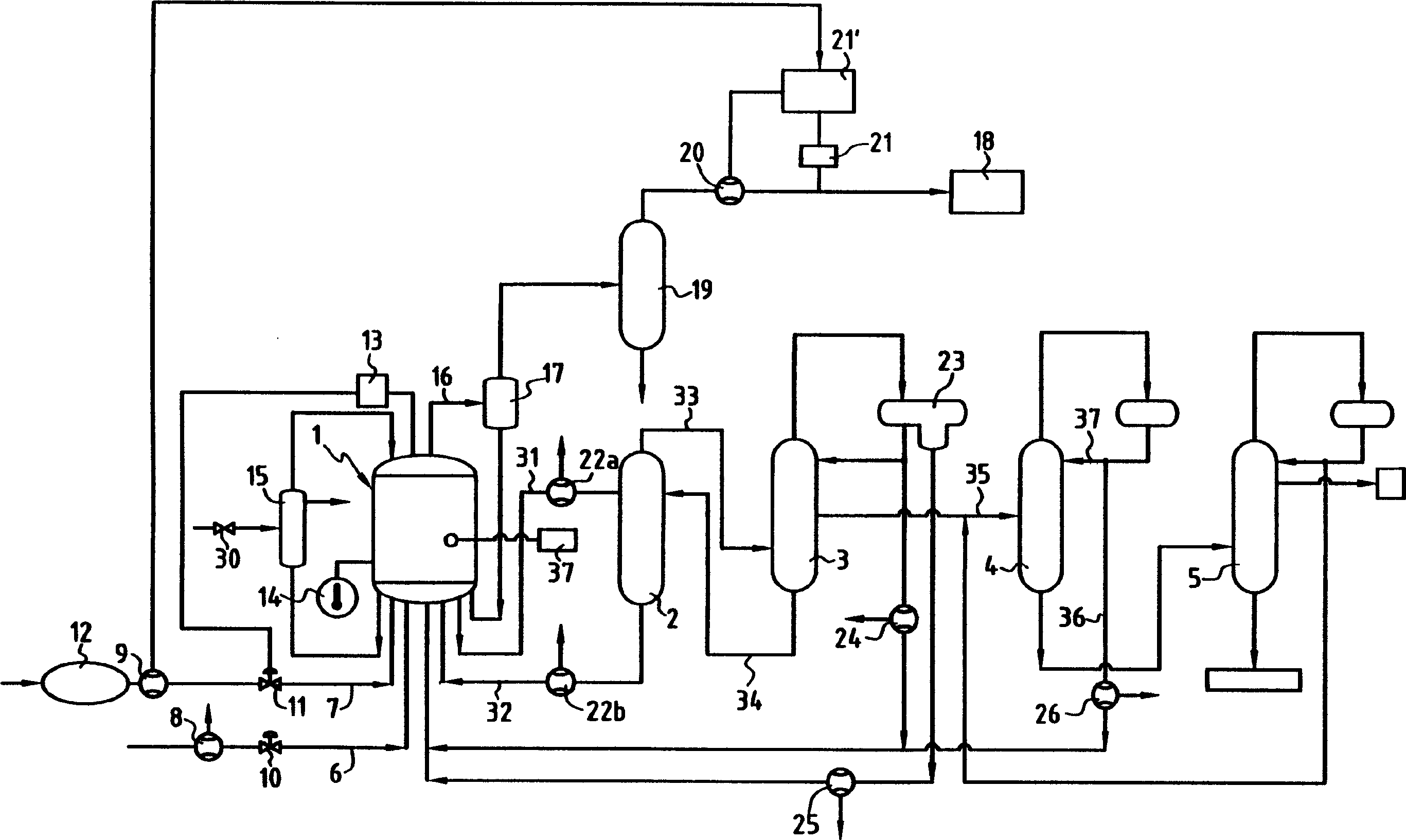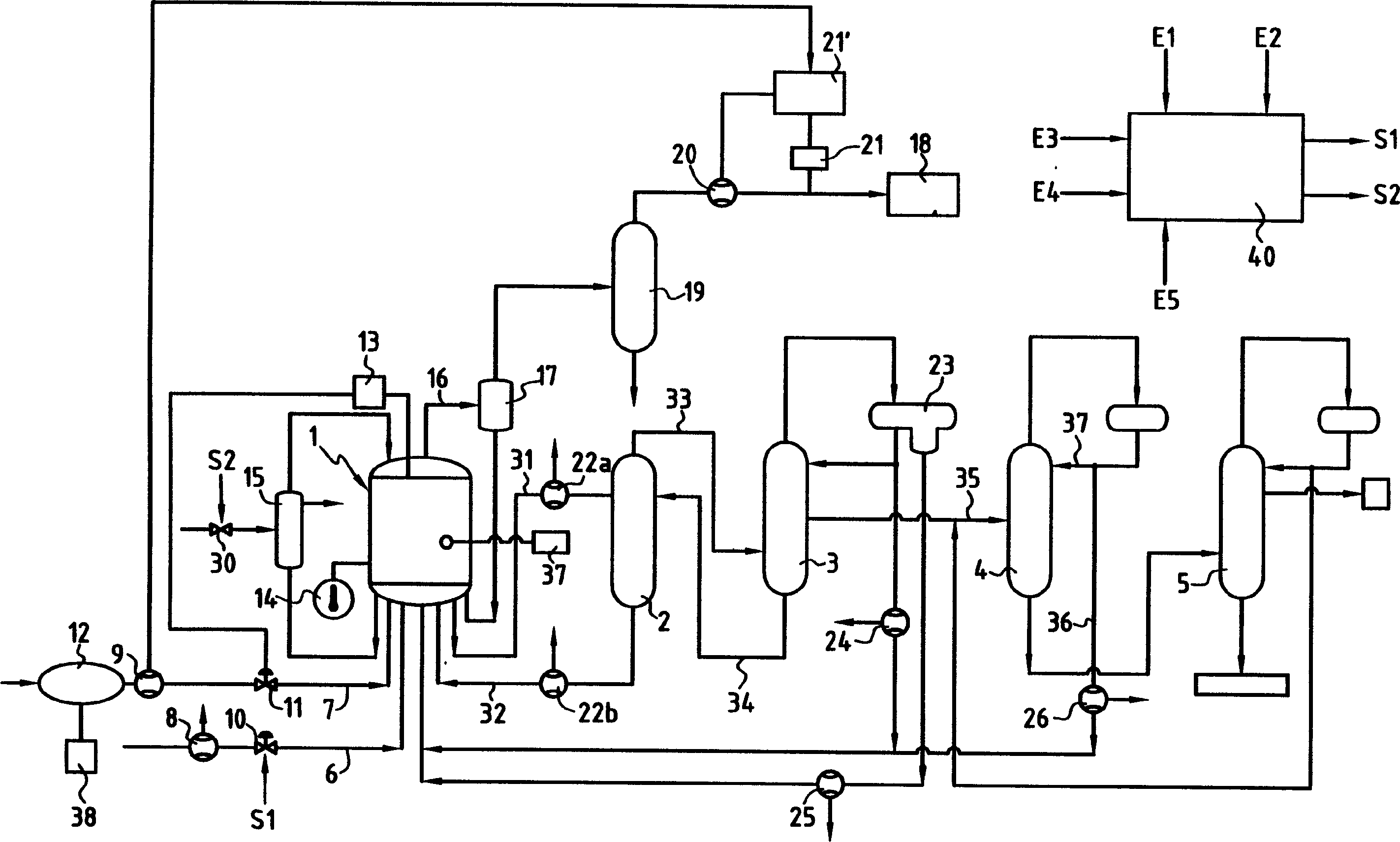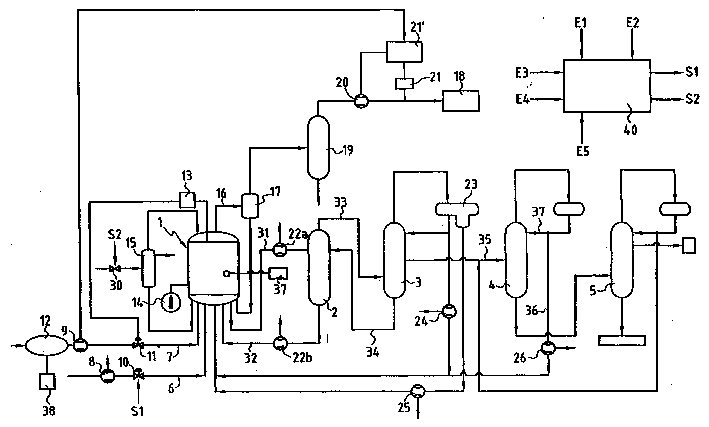Improvement to methods for continuous production of acetic acid and/or methyl acetate
A kind of technology of methyl acetate and acetic acid, applied in the improvement field of continuous production of acetic acid and/or methyl acetate, can solve problems such as no one has proposed
- Summary
- Abstract
- Description
- Claims
- Application Information
AI Technical Summary
Problems solved by technology
Method used
Image
Examples
Embodiment 1
[0124] Embodiment 1 (comparative example)
[0125] In this example, acetic acid is produced by the liquid phase carbonylation of methanol with carbon monoxide in the apparatus shown in Figure 1 in the presence of a homogeneous catalyst system.
[0126] The carbonylation reaction was carried out at a total pressure of 29 bar absolute and a temperature of 185°C.
[0127] The water concentration was kept at a value of 14% by weight of the reaction medium.
[0128] Concentrations expressed by weight of reaction medium are as follows:
[0129] ●Water: 14%
[0130] ●Iodomethane: 10%
[0131] ●Methyl acetate: 1.75%
[0132] ●Acetic acid and catalyst: up to 100%
[0133] The production rate of acetic acid is 54.1T / h.
[0134] In the case shown in the figure, the plant comprises: a reaction zone I consisting essentially of a reactor 1, a flash zone II comprising essentially a flash evaporator 2, and a zone comprising three distillation columns 3, Purification zon...
Embodiment 2
[0171] This embodiment illustrates how to implement the method of the present invention, in order to figure 2 Acetic acid is produced in the apparatus shown and under the operating conditions of Example 1.
[0172] figure 2 The arrangement shown in represents a modification of the arrangement shown in FIG. 1 and includes a multivariable predictive controller 40.
[0173] The controller 40 is programmed to adjust the target variable around the setpoint by acting on the action variable.
[0174] In this Example 2, the target variables to be adjusted were the carbon monoxide feed rate and the CO 2 selective. The action variables are the temperature in Reactor 1 and the feed rate of methanol to this reactor.
[0175] More specifically, controller 40 receives:
[0176] - the feed rate of carbon monoxide in the reactor 1 measured by the flow meter 9 at the first input E1;
[0177] - At the second input end E2, the CO of the reaction is calculated by the calculation module 21' ...
Embodiment 3
[0206] This example also refers to the industrial plant and equipment used in Example 2.
[0207] However, the controller 40 is also used in this example to control the flow of circulating liquid into the reactor 1 to the level of liquid in the reactor.
[0208] The main liquid stream entering Reactor 1 is:
[0209] ● Methanol feed rate - F1
[0210] - Recycle streams entering the reactor from Zones II and III, namely:
[0211] - circulating liquid components from the flash zone and circulating liquid from the bottom of the first distillation column - F2
[0212] - Recycle part of the aqueous liquid phase from the top of the first distillation column - F3
[0213] - Recycle organic liquid phase from the top of the first distillation column - F4
[0214] - Recycle partially condensed liquid from the top of the second distillation column - F5
[0215] The main liquid stream leaving the reactor consists of stream-F6 which enters the flash zone from the reactor.
[0216] In ...
PUM
 Login to View More
Login to View More Abstract
Description
Claims
Application Information
 Login to View More
Login to View More - R&D
- Intellectual Property
- Life Sciences
- Materials
- Tech Scout
- Unparalleled Data Quality
- Higher Quality Content
- 60% Fewer Hallucinations
Browse by: Latest US Patents, China's latest patents, Technical Efficacy Thesaurus, Application Domain, Technology Topic, Popular Technical Reports.
© 2025 PatSnap. All rights reserved.Legal|Privacy policy|Modern Slavery Act Transparency Statement|Sitemap|About US| Contact US: help@patsnap.com



